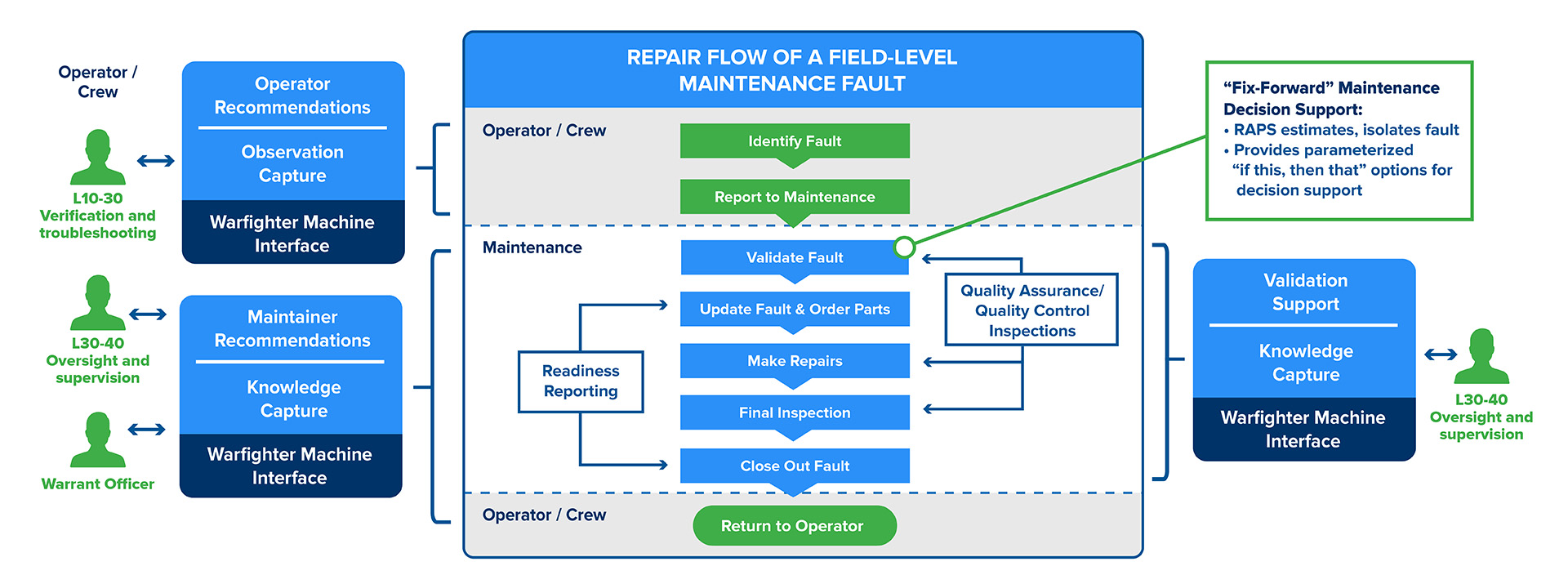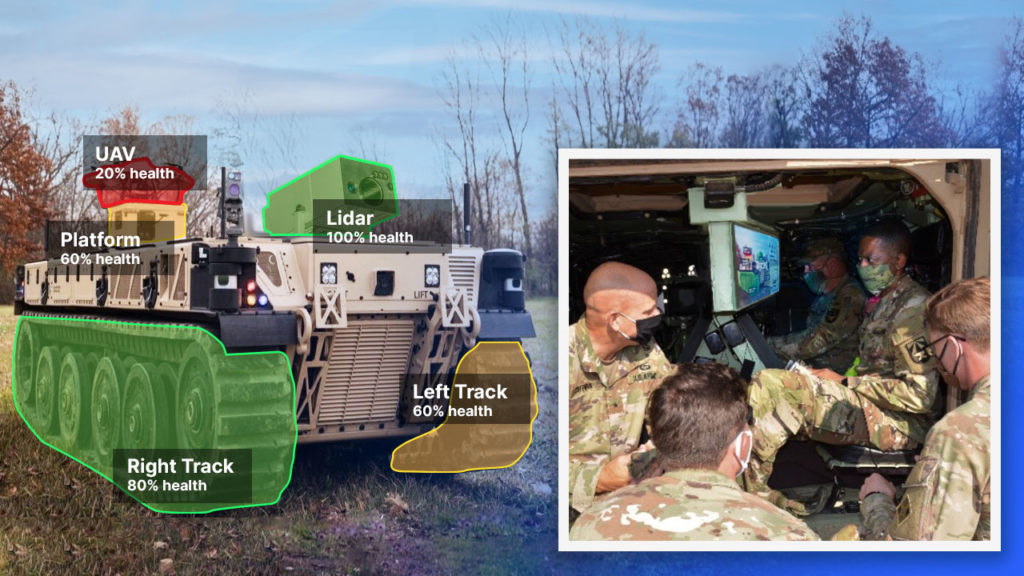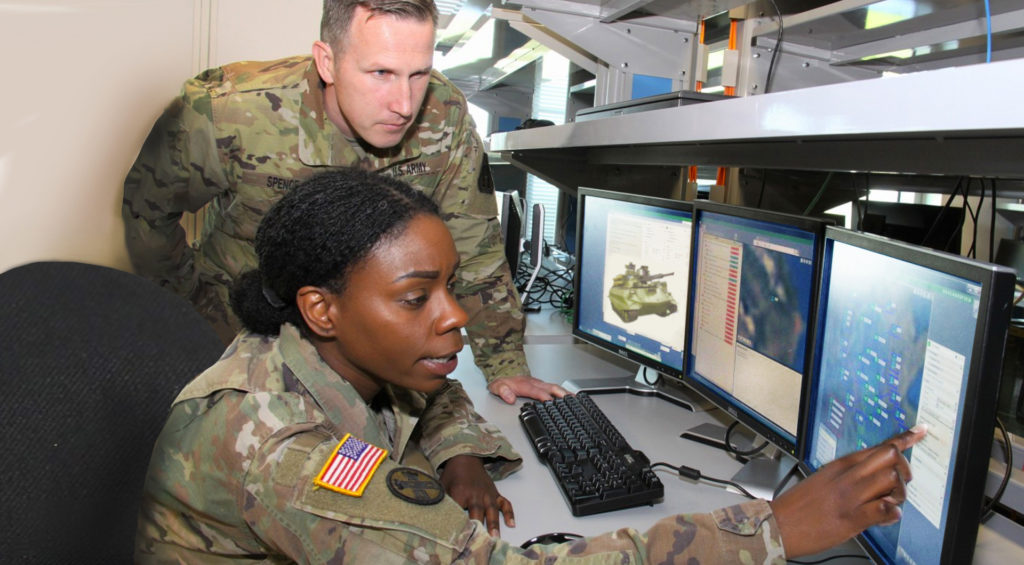RAPS
An AI-based maintenance system that keeps
robotic combat vehicles mission ready
An AI-based maintenance system that keeps robotic combat vehicles mission ready
Real-time Assessment and Predictive Status (RAPS)
RAPS is a predictive maintenance protocol for remote-controlled robotic combat vehicles (RCVs). It applies the latest in artificial intelligence (AI) and machine learning (ML) to keep RCVs mission-ready.
Uncrewed RCVs can reduce casualties and increase combat effectiveness but they are expensive and difficult to maintain.
AI Solution to Maintenance Challenges
RAPS is an AI and ML-based solution to RCV maintenance challenges. It is a robust sustainment, maintenance, and logistics protocol that ensures the vehicles’ mission-readiness.
- Alerts Army decision makers about potential equipment failure in advance so they can take corrective action in a short time window.
- Accounts for deployment in regions with low connectivity by prioritizing information that needs to be relayed immediately and determining what can be sent after the mission is complete.
- Functions as programmed even in areas vulnerable to hacking by nation-state actors.
- Integrates seamlessly with the Army’s decision-making process.
- Will deliver actionable insights through a role-tailored human-machine interface (HMI).
“By optimizing maintenance and logistics, RAPS will reduce the cost of RCV operations and improve the US Army’s mission readiness. To achieve top readiness, we are designing RAPS to be explainable, adaptable, modular, and accessible.”

Kenny Lu,
Human-Centered AI Scientist and Principal Investigator of RAPS
Long-term goals for the RAPS solution include:
- Explainability. Users will understand how RAPS makes reliable predictions about RCV health status and required maintenance
- Adaptability. RAPS will continue to provide predictions and assessments even if onboard sensors become degraded or unavailable.
- Modularity. RAPS will be easy to maintain. It will help new prediction models, which will reduce the time and costs of maintaining RCV mission readiness.
- Accessibility. An intuitive HMI will allow users across all levels of operation to independently update and sustain the system. RAPS will also enable users to integrate their domain knowledge into the system to yield better predictions.

RAPS identifies gaps in maintenance workflows and tags users for knowledge capture, enabling the system to make better predictions.
RAPS draws on Charles River’s extensive experience in robotics and autonomy and innovation in the fields of probabilistic programming and explainable AI. RAPS also gives us an opportunity to team up with small businesses with expertise in other domains, including sensors and custom hardware, to create a collaborative and modular solution for RCV sustainment.
The designs developed under RAPS can also apply to the fields of vehicle health monitoring and predictive health maintenance.
Contact us to learn more about RAPS and our other robotics and autonomy capabilities.
This material is based upon work supported by the U.S. Army Small Business Innovation Research Program Office and the U.S. Army Futures Command under Contract No. W911NF-22-C-0018 and W91CRB-21-C-0037. Any opinions, findings and conclusions or recommendations expressed in this material are those of the author(s) and do not necessarily reflect the views of the U.S. Army Small Business Innovation Research Program Office and the U.S. Army Futures Command.


